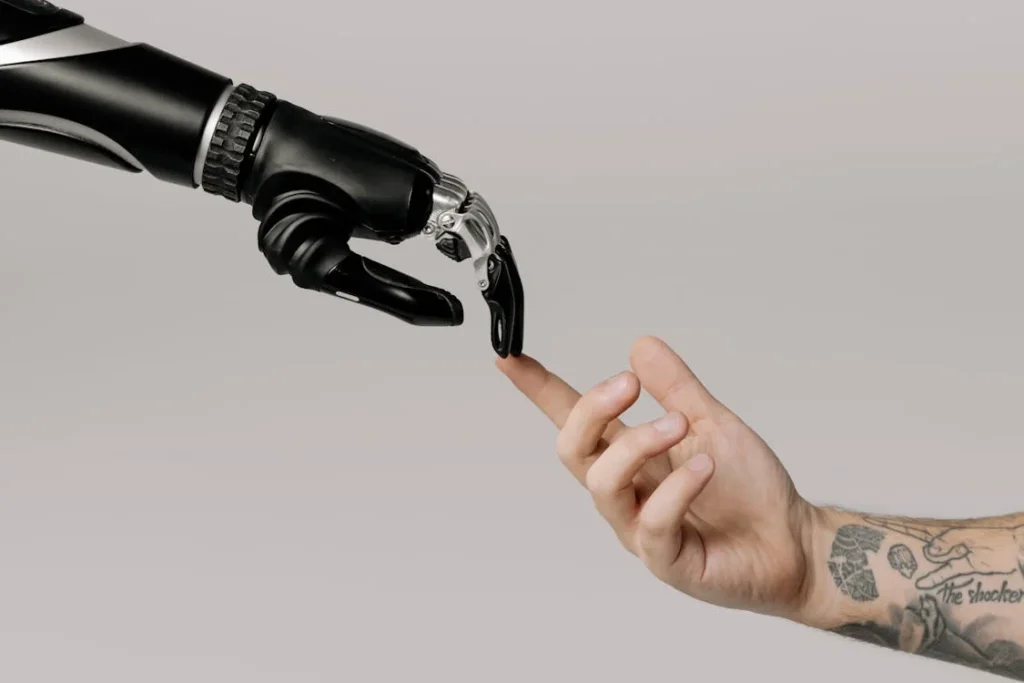Recovering from an amputation is a journey that requires patience, determination, and the right mindset. Every step of rehabilitation—from healing after surgery to learning to walk with a prosthetic—takes time. One of the most important things you can do during this process is to set realistic goals that help track progress and keep motivation high.
Setting goals is not about rushing through recovery; it is about making steady, meaningful progress. Some days will feel easier than others, and setbacks are a natural part of the process. But with the right approach, small achievements will build into major milestones, leading to greater mobility, confidence, and independence.
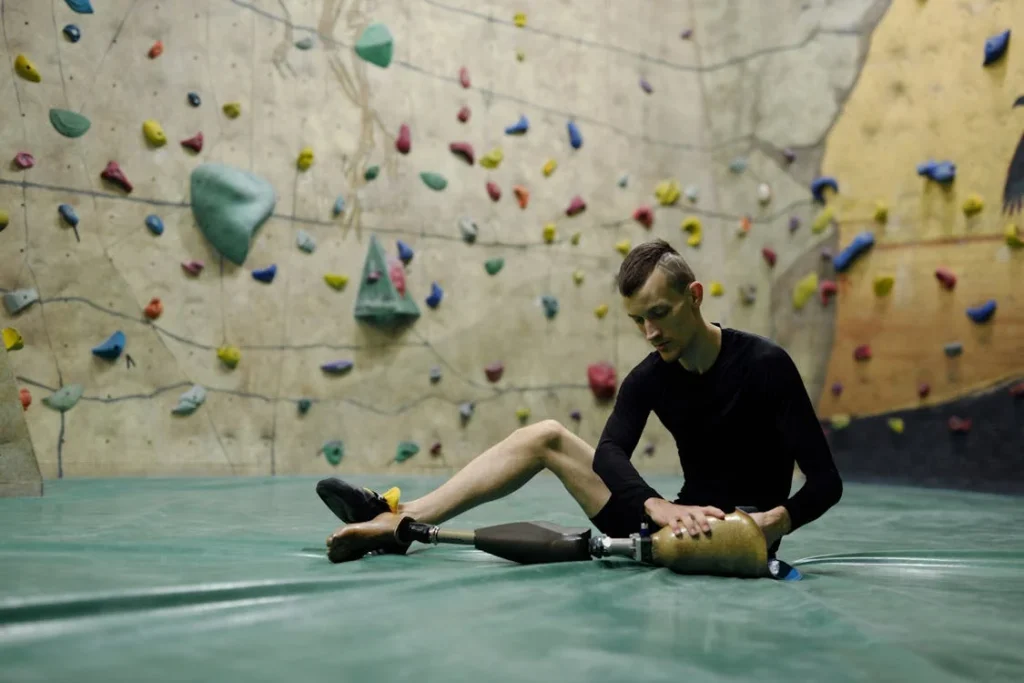
Understanding the Importance of Realistic Goals in Rehabilitation
Setting goals during rehabilitation is not just about measuring progress—it is about creating a roadmap that keeps you focused and motivated.
Recovery after an amputation is a deeply personal experience, and each person’s journey is different. Some people recover faster, while others take more time to adjust physically and emotionally.
The key is to set goals that match your individual pace and abilities, rather than comparing your progress to someone else’s.
The Role of Goals in Motivation and Progress
One of the biggest challenges in rehabilitation is staying motivated, especially when progress feels slow. Without clear goals, it can be easy to feel stuck or discouraged.
Goals give you something to work toward, making it easier to track improvements over time. Whether it is standing up without assistance, walking a certain distance, or mastering the use of a prosthetic, each milestone brings a sense of achievement.
Rehabilitation is not a straight path—it has ups and downs. Some days, movements that felt easy before may suddenly feel difficult. This is normal, and it does not mean that progress is lost.
When goals are set realistically, they act as a reminder of how far you have come, helping to push through difficult moments.
Balancing Short-Term and Long-Term Goals
A strong rehabilitation plan includes both short-term and long-term goals.
Short-term goals focus on immediate progress, like improving balance or reducing pain, while long-term goals look at big-picture milestones, such as returning to work, driving, or participating in physical activities.
Short-term goals are important because they create small wins that build confidence. For example, if walking with a prosthetic feels overwhelming, the first goal might be simply wearing it for an hour each day.
Once that becomes comfortable, the next goal might be taking a few steps with assistance. By breaking down the recovery process into smaller steps, each achievement builds momentum for the next stage.
Long-term goals help keep motivation strong by providing a vision of what is possible. They may take months or even years to achieve, but they give a sense of direction.
Whether it is returning to a favorite hobby, walking independently, or running a marathon, long-term goals help shape the recovery journey.
Adjusting Goals as Recovery Progresses
Recovery is not always predictable, and sometimes goals need to be adjusted. If a particular goal is proving too difficult, it may help to break it down further or approach it differently.
For example, if walking independently is taking longer than expected, working on strength-building exercises first may make the process easier.
It is also important to recognize when goals have been reached and set new challenges. Once a certain level of mobility or independence is achieved, setting new objectives ensures that progress continues.
The key is to remain flexible, adjusting goals based on what feels right for your body and your personal comfort level.
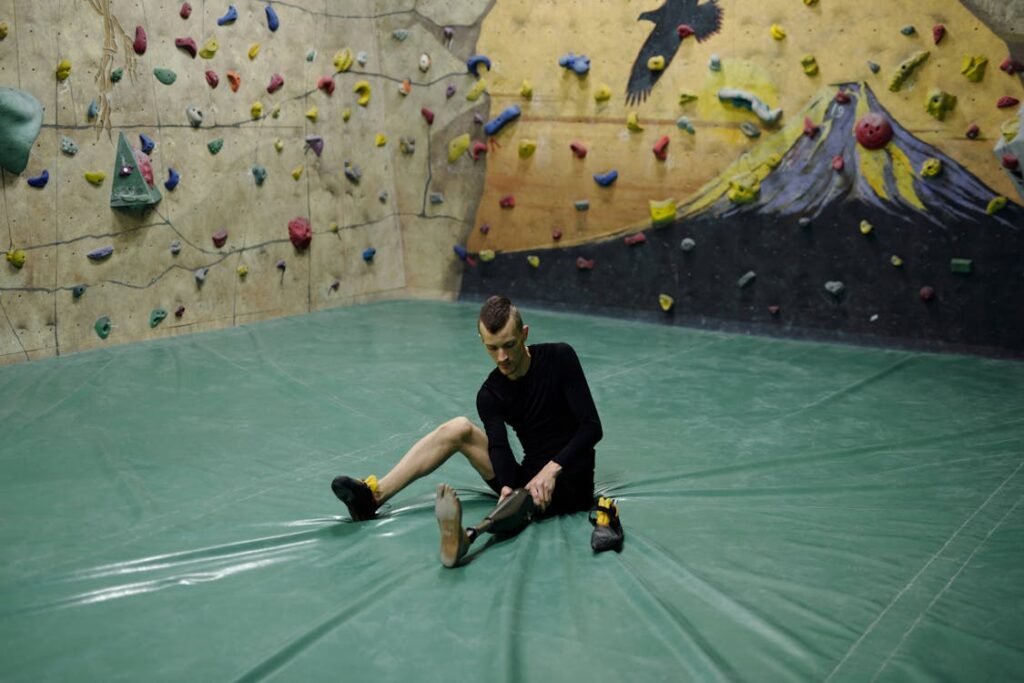
Setting Personalized Goals Based on Individual Abilities
Every amputation is different, and so is every recovery journey. What works for one person may not work for another, which is why setting personalized goals is so important.
Goals should be based on your own abilities, lifestyle, and long-term aspirations, rather than following a one-size-fits-all approach. A well-structured goal-setting strategy considers factors such as the level of amputation, overall health, age, and daily needs.
Assessing Your Current Abilities and Challenges
The first step in setting realistic goals is understanding where you are in your recovery. This involves assessing strength, flexibility, balance, and mobility.
Some individuals may already have good upper body strength and balance, making it easier to move around, while others may need extra time to work on these areas before progressing to advanced mobility tasks.
A healthcare professional, such as a physical therapist or prosthetist, can help evaluate your abilities and guide you in setting appropriate goals.
They will consider factors such as how well your residual limb is healing, whether you are experiencing pain or discomfort, and how much mobility you currently have.
Starting with a strong foundation ensures that each goal is achievable and aligned with your personal needs.
Building Goals Around Daily Activities
One of the best ways to make goals practical is to align them with real-life activities. Instead of focusing only on exercises and therapy sessions, consider what movements and tasks will improve daily independence.
If getting out of bed in the morning is a challenge, a goal might be to practice standing up independently before moving on to walking exercises.
For those planning to use a prosthetic, an early goal may involve wearing it for longer periods each day, getting used to the fit and weight before attempting complex movements.
For individuals who rely on a wheelchair or crutches, setting goals around improving upper body strength and endurance can make movement easier.
Over time, as basic tasks become more manageable, goals can expand to include household activities, work-related tasks, or hobbies. The more recovery is integrated into everyday life, the more natural and sustainable progress becomes.
Ensuring Goals Are Measurable and Achievable
Goals should be clear and measurable to track progress effectively. Instead of setting vague goals like “I want to walk better,” setting a goal like “I will practice walking with my prosthetic for five minutes every day” creates a specific target.
This makes it easier to see improvement and stay motivated.
At the same time, goals should be challenging but achievable. Setting unrealistic expectations, such as aiming to run before mastering walking, can lead to frustration.
Recovery happens in phases, and each step should build on the previous one. Listening to your body and celebrating small successes helps maintain momentum and prevents discouragement.
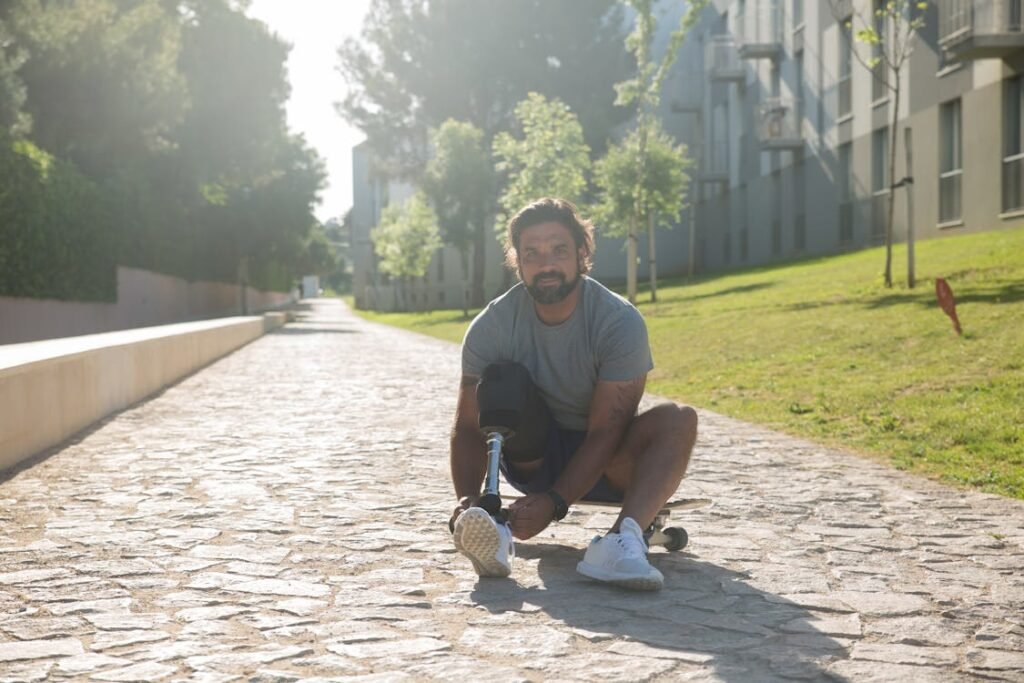
Overcoming Mental and Emotional Barriers in Goal Setting
Rehabilitation after an amputation is not just a physical process—it is also an emotional and mental journey. Setting goals is important, but staying motivated and overcoming self-doubt can be just as challenging as learning to walk again.
Fear, frustration, and anxiety are common during recovery, and addressing these emotions is key to achieving long-term success.
Managing Frustration and Setbacks
Recovery does not follow a straight path, and setbacks are a normal part of the process. Some days will feel easier than others, and progress may not always be as fast as expected.
It is common to feel frustrated when a movement that was improving suddenly becomes difficult again. Instead of seeing setbacks as failures, it is important to view them as learning experiences.
When a goal feels overwhelming, breaking it down into smaller, more manageable steps can help. If walking across a room feels too difficult, starting with standing exercises or shorter distances can rebuild confidence.
Adjusting expectations based on how the body responds allows for steady improvement without added stress.
Support from family, therapists, or peer groups can also help navigate frustrating moments. Talking about challenges and seeking encouragement from others who have faced similar experiences provides reassurance and motivation to keep going.
Overcoming Fear of Movement and Falling
Many amputees experience fear of movement, especially when learning to walk with a prosthetic. The fear of falling is particularly common and can lead to hesitation, stiffness, or avoidance of certain movements. This fear is natural, but it can slow progress if not addressed.
One way to overcome this is through gradual exposure. Practicing movements in a controlled environment, such as a therapy session with parallel bars or a handrail, builds confidence. As balance improves, movements become more natural, reducing fear over time.
Using mobility aids, such as crutches or walkers, can provide additional support while transitioning to greater independence.
Learning proper fall recovery techniques with a physical therapist also helps reduce fear, as knowing how to get up safely after a fall increases confidence in movement.
Staying Motivated Through a Positive Mindset
Staying motivated during rehabilitation requires a strong, positive mindset. One of the best ways to maintain motivation is to focus on progress rather than limitations.
Keeping a journal or video diary of daily improvements can be a great way to reflect on how far you have come.
Visualization techniques can also be helpful. Imagining yourself walking confidently, returning to work, or engaging in a favorite activity reinforces motivation and strengthens belief in success.
Setting long-term goals that align with personal passions and dreams makes rehabilitation feel more purposeful and rewarding.
Surrounding yourself with positive influences—whether through supportive friends, uplifting music, or inspiring stories of other amputees—helps reinforce a mindset of resilience.
Small daily affirmations, such as “I am getting stronger every day” or “Every step I take is progress”, can make a big difference in maintaining focus and determination.
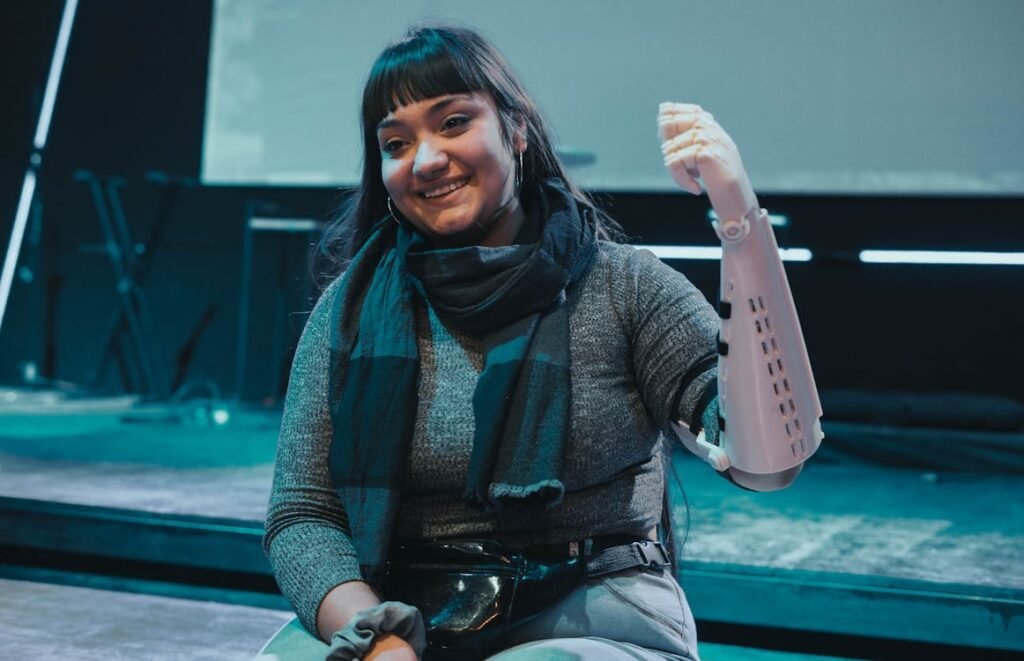
Tracking Progress and Adjusting Goals Over Time
Rehabilitation is a continuous process, and setting goals is not something that happens just once. As the body heals and strength improves, goals need to evolve to match new abilities.
Tracking progress helps measure improvements, stay motivated, and make necessary adjustments along the way.
Measuring Progress in Meaningful Ways
Tracking progress is more than just looking at how far you can walk or how long you can stand. It also includes how comfortable and confident you feel while doing these activities. Some improvements may not be immediately visible, but they are just as important.
One way to measure progress is by keeping a recovery journal. Writing down daily or weekly reflections on mobility, pain levels, and overall well-being provides a clear picture of improvement over time.
Even on difficult days, looking back at past achievements can serve as a reminder of how far you have come.
Another way to track progress is through video recordings. Watching yourself walk, stand, or perform daily activities from week to week helps identify small changes that might not be noticeable in the moment.
These recordings also help physical therapists make necessary adjustments to training plans and prosthetic fittings.
Recognizing When Goals Need to Change
As rehabilitation continues, some goals may need to be adjusted. If a goal is consistently too difficult, breaking it into smaller, more manageable steps can make it feel more achievable.
On the other hand, if a goal is reached quickly, setting new challenges ensures that progress does not stall.
The body’s response to rehabilitation is not always predictable. There may be times when pain, fatigue, or unexpected health issues slow progress.
When this happens, it is important to listen to your body and allow for adjustments rather than feeling discouraged. Resting or modifying a goal does not mean failure—it is simply part of the process.
Regular check-ins with a physical therapist or prosthetist help ensure that goals remain realistic and beneficial. If walking longer distances becomes a struggle, it may indicate that the prosthetic needs adjusting.
If strength exercises feel too easy, increasing resistance or duration can keep progress on track.
Celebrating Small and Big Achievements
Acknowledging achievements—both big and small—keeps motivation high. Every step forward, whether it is standing for a longer period, walking on uneven ground, or going up stairs independently, is worth celebrating.
Recognizing progress boosts confidence and reinforces the belief that recovery is possible.
Celebrating does not have to mean grand gestures. It can be as simple as sharing successes with a friend, treating yourself to a favorite meal, or taking a moment to appreciate how much has been accomplished.
Each achievement, no matter how small, is a sign of strength and determination.
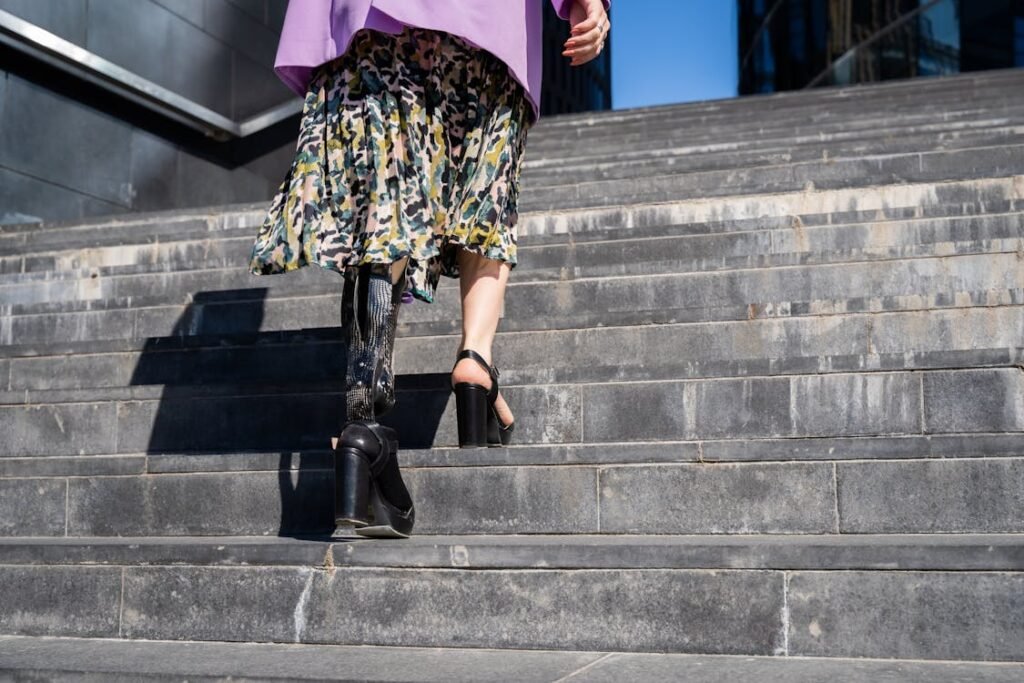
Incorporating Goal-Setting into Everyday Life
Setting and achieving goals during rehabilitation should not feel like a separate, structured task—it should be naturally woven into daily life.
Recovery is not just about therapy sessions or exercises; it is about regaining independence in real-world activities and finding ways to stay engaged in meaningful routines. By making goal-setting a part of everyday life, progress becomes more natural and sustainable.
Integrating Rehabilitation into Daily Activities
Rather than viewing rehabilitation as something that only happens in therapy, it helps to see it as a part of everything you do.
If improving balance is a goal, then simple tasks like standing at the kitchen counter while preparing a meal or shifting weight while brushing your teeth can serve as mini-exercises.
If walking with a prosthetic is the goal, then moving around the house with purpose—such as getting a glass of water or opening a window—provides natural opportunities for practice.
Each activity that requires movement can be an opportunity to reinforce strength, balance, and coordination. The more these movements are repeated in daily life, the more comfortable and automatic they become.
Rehabilitation is not just about mobility—it is about making routine activities feel effortless and natural again.
Building Confidence Through Small Successes
Every successful task completed, no matter how minor, contributes to confidence. If walking outside for the first time feels intimidating, starting with short walks inside the house or around the yard can make the transition easier.
If carrying objects while using a prosthetic leg feels challenging, beginning with lighter items like a book or cup of tea helps the body adjust before attempting heavier loads.
The key is to gradually increase difficulty while maintaining a sense of accomplishment. Taking on manageable challenges ensures steady progress without feeling overwhelmed.
The more often a movement is practiced successfully, the more natural it becomes. Over time, confidence grows, and once-difficult tasks become second nature.
Finding Ways to Stay Engaged and Motivated
Rehabilitation can feel repetitive at times, which is why it is important to stay mentally engaged and make the process enjoyable.
Finding creative ways to work on goals—such as turning exercises into games, listening to music while practicing movements, or setting fun personal challenges—helps maintain motivation.
Incorporating social interactions into rehabilitation also makes the process more enjoyable. Walking with a family member, joining a support group, or sharing progress with a friend adds a sense of connection and encouragement.
Some individuals find motivation through friendly competition, such as tracking steps or setting fun movement challenges with loved ones.
A positive mindset plays a huge role in staying engaged. Instead of focusing on what is difficult, shifting attention to what is improving each day helps maintain motivation.
Recognizing small victories and embracing the process makes rehabilitation less about struggle and more about growth and possibility.
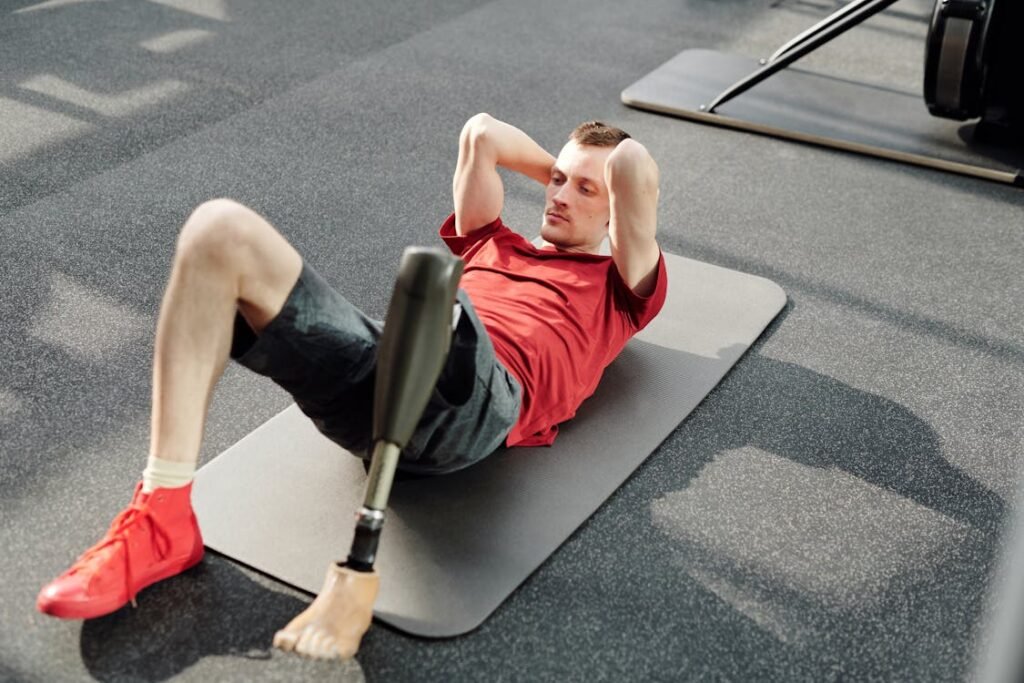
Setting Long-Term Goals for a Fulfilling Future
Rehabilitation is not just about short-term recovery; it is about creating a long-term vision for the future. Setting long-term goals helps amputees regain control of their lives, plan for new experiences, and work toward greater independence.
These goals go beyond walking or using a prosthetic—they focus on personal ambitions, career aspirations, social engagement, and overall well-being.
Planning for Greater Independence
As rehabilitation progresses, daily activities that once felt difficult become easier. The next step is setting goals that focus on regaining full independence.
This might involve cooking meals without assistance, managing transportation, or even traveling solo. Each goal should be based on personal priorities, ensuring that rehabilitation aligns with the life an individual wants to rebuild.
For some, independence may mean returning to a previous lifestyle, while for others, it may involve discovering new ways to do things.
Exploring different techniques, assistive devices, or even modifying environments can make tasks more accessible. The goal is not just to return to “normal” but to adapt and thrive in a way that works best for each individual.
Returning to Work and Professional Growth
For many amputees, returning to work is an important milestone. Setting realistic career goals involves assessing physical abilities, workplace adjustments, and potential modifications.
Some individuals may be able to return to their previous jobs with minor accommodations, while others may explore new career paths that align better with their mobility and lifestyle.
Discussions with employers, occupational therapists, and HR representatives can help create a plan that ensures a smooth transition back to work. Flexible schedules, adaptive tools, or even a phased return can make the process easier.
For those looking to start fresh, training programs, online courses, or entrepreneurship provide exciting opportunities for professional reinvention.
Engaging in Sports and Active Hobbies
Many amputees set long-term goals related to sports, fitness, or active hobbies. With advancements in prosthetic technology, participating in activities like running, swimming, cycling, or hiking has become more accessible.
Some individuals even take up adaptive sports such as wheelchair basketball, para-swimming, or skiing, turning rehabilitation into a gateway for new experiences.
For those who were previously active, the goal may be to return to a favorite sport. For others, it may be about exploring new physical activities that match their current abilities.
Adaptive fitness programs, strength training, and endurance-building exercises help ensure that movement remains a lifelong part of recovery.
Strengthening Social Connections and Mental Well-Being
Long-term recovery is not just about physical health—it is also about maintaining mental and emotional well-being. Setting goals around social engagement, travel, community involvement, or even volunteering can bring a sense of purpose and fulfillment.
Many amputees find support through peer mentoring, where they help guide others who are newly adjusting to life after amputation.
Sharing experiences, offering encouragement, and being part of a support network can create meaningful connections and a sense of belonging.
Setting long-term goals ensures that recovery is not just about overcoming challenges but about embracing possibilities.
By looking ahead and creating a vision for the future, amputees can move beyond rehabilitation and toward a life that is active, independent, and full of potential.
Conclusion
Setting realistic goals during rehabilitation after an amputation is essential for building strength, confidence, and independence. The journey may not always be easy, but by breaking progress into manageable steps, staying adaptable, and focusing on both short-term and long-term achievements, recovery becomes a structured and fulfilling process.
Each goal—whether learning to walk with a prosthetic, returning to work, or engaging in a favorite hobby—brings new opportunities for growth. Recovery is not about rushing the process but about embracing steady progress. Every small success adds up, creating momentum toward a more independent and active life.
At Robobionics, we are committed to supporting amputees in their rehabilitation journey. Our advanced prosthetic solutions, expert guidance, and personalized rehabilitation support help individuals set and achieve meaningful goals.



